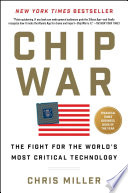
From "Chip War"
GCA's Downfall and Loss of US Lithography Dominance
Key Economic Insight
GCA Corporation, initially celebrated as a leading U.S. high-technology company in 1981, pioneered critical photolithography equipment essential for Moore's Law. GCA engineers successfully developed the 'stepper' in 1978, a more accurate method than previous scanning techniques, allowing for higher-resolution imaging and smaller transistors. This innovation granted GCA a monopoly on an extraordinarily valuable machine, propelling its annual revenue from below 50 million dollars to 300 million dollars and causing its stock price to surge.
However, GCA's leadership, particularly CEO Milt Greenberg, exhibited severe mismanagement as Japan's chip industry grew. Greenberg focused on hobnobbing with politicians rather than business operations, leading to out-of-control costs, wildly mismanaged inventory (e.g., 1 million dollars in forgotten lenses), and executive excesses. The company ignored warnings of cyclical downturns, entering the mid-1980s semiconductor slump overextended, which saw global lithography equipment sales fall by 40 percent and GCA's revenue by over two-thirds. Furthermore, Greenberg cut ties with Nikon, a Japanese partner providing precision lenses, which led Nikon to reverse-engineer GCA's stepper and quickly surpass GCA in market share.
GCA's decline was largely attributed to homegrown problems, including unreliable equipment and abysmal customer service, which left customers 'fed up'. Despite possessing world-class technology, the company struggled with mass production and quality control, crucial for precision manufacturing where even a thunderstorm could affect chip carving. In contrast, Nikon's machines were significantly more reliable, offering ten times the continuous use hours before needing repairs compared to GCA's. By 1988, U.S. firms' share of the global semiconductor lithography equipment market, led by GCA, had plummeted from 85 percent in 1978 to 50 percent, primarily due to GCA's internal failures and lack of responsiveness to customer needs.
📚 Continue Your Economic Learning Journey
Access the complete Chip War summary with audio narration, key takeaways, and actionable insights from Chris Miller.